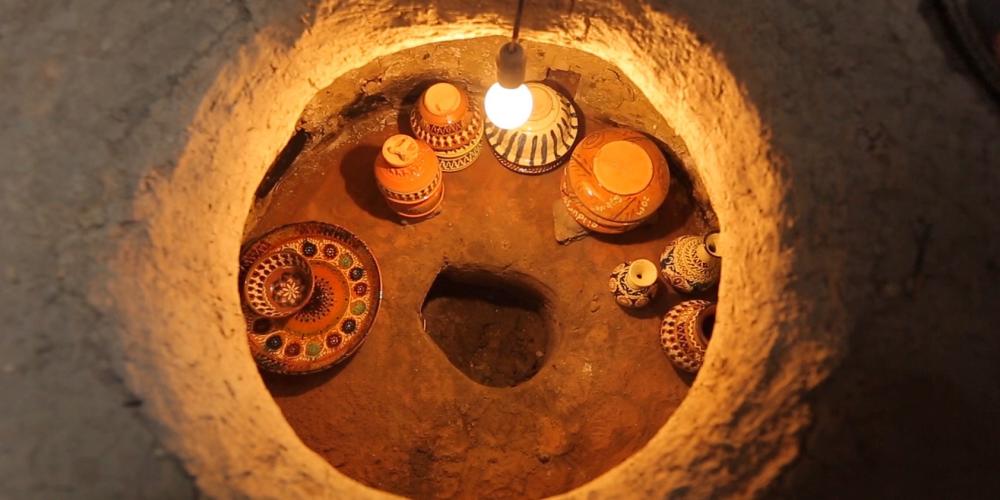Art and craft

The communities along the Silk Roads were not just traders, they were also producers. In many cases, they honed their skills over the years, developing unique styles of art and craft. Sometimes these products were made to be sold, sometimes they were used by the local people as part of their cultural customs. And, importantly, they were usually passed down through the generations.
Thankfully, some of these local traditions have survived and you will be able to see them on your journey, perhaps in shops and bazaars, or even at workshops where you can meet some of the artists.
In Turkmenistan and Iran, look out for the Turkmen-style needlework, which is a decorative art used on the national dress of people of all genders and ages. Creating the needlework uses thin silk threads that are intertwined in three layers, twisted into a single thread, then straightened with a large needle. The style of the pattern often reveals which town or region the artist is from.

Also in Turkmenistan, you may be interested in the traditional Turkmen carpet making. The carpets feature a dense texture decorated with coloured patterns of geometric shapes relating to one of the five main Turkmen tribes. The carpets are created on horizontal or vertical looms using different coloured wool threads and are used by local communities as both floor coverings and wall decorations.
While travelling through Uzbekistan, you should be able to find some of the country's ceramic art, one of the oldest types of craft here. Because pottery clay is found naturally here, it's been used for millennia to create large household items like water containers, tandoor ovens, and even toys. Over the generations, it took on a decorative purpose as well as utilitarian, and now some of the finest pieces of Uzbek ceramic art are items like plates and vases, with colourful geometric and floral designs.

And in Tajikistan, one of the important crafts that has been passed down for generations is Chakan embroidery. The practice involves sewing ornaments, floral images, and important symbols onto cotton or silk fabrics with colourful threads. The style of embroidery is used to decorate clothing and household items like curtains, pillows, and bedspreads, often with depictions of mythological images relating to nature and the cosmos. Although it is traditionally used for women's clothing, Chakan embroidery is also part of many ceremonial outfits, including the skullcap for grooms at weddings in parts of Tajikistan. You won't have trouble finding some Chakan products, because many craftswomen earn a living by selling them in local bazaars.

